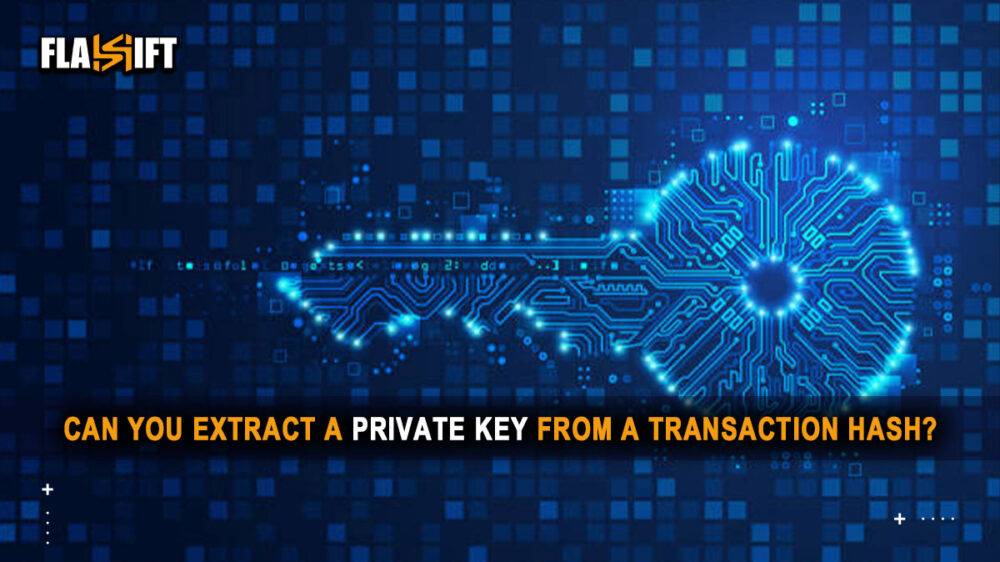As blockchain and cryptocurrency grow, so has confusion and misinformation, especially for new entrants. One of the longest-standing crypto myths is that you can extract a private key from a transaction hash. Initially, this is something for the non-expert to believe, but in reality, it contradicts some of the core tenets of cryptographic security.
Understanding the Basics of Blockchain Cryptography

What is a Private Key and Why Is It Important?
A private key is a randomly generated sequence of characters used to prove the ownership of a cryptocurrency wallet. It’s mathematically connected with a public key and a wallet address. Anybody who gains access to your private key can move your funds.
How Transaction Hashes Are Created?
A transaction hash (or TxID) is a reference identifier produced by hashing the whole transaction data (inputs, outputs, values, etc.) with a cryptographic hash function like SHA-256. It’s for reference and tracking purposes, not encryption.
Differences Between Public Keys, Addresses, and Hashes
- Public Key: Derived from a private key using elliptic curve cryptography.
- Address: A hashed form of the public key, shortened for usability.
- Transaction Hash: Result of hashing the data of a transaction; it contains no secret information.
Read More: Can You Derive a Private Key from a Blockchain Transaction?
The Myth of Extracting Private Keys from Hashes

Where This Idea Comes From
The myth likely stems from misunderstandings about blockchain and a poor grasp of hashing. Because everything in crypto is related through hashes, some assume reversing these is viable and that it’s possible to extract a private key from a transaction hash.
Misinterpretation of Hashing and Encryption
People often confuse hashing with encryption. Hashing is a one-way function. Once data is hashed, you cannot retrieve the original input. Encryption, on the other hand, is reversible with a key. This is a fundamental distinction that invalidates the idea of being able to extract private keys from transaction hashes.
Real-World Examples That Mislead Beginners
Online forums or clickbait YouTube videos often promote so-called “hacks” claiming to extract a private key from a transaction hash. These are either scams or gross misinterpretations of blockchain mechanics.
Cryptographic Security: Why It’s Practically Impossible

One-Way Functions and Irreversibility
Cryptographic hash functions like SHA-256 are irreversible. Even with modern computing power, reversing a hash to find the original input is computationally unfeasible. That means attempts to extract a private key from a transaction hash are doomed.
Brute-Force Scenarios and Computational Limits
Suppose that we try to brute-force a private key from a transaction hash. We would have to attempt up to 2^256 combinations—a number so large that even all the world’s computers working together for millions of years couldn’t do it.
Role of Elliptic Curve Cryptography (ECC)
ECC underpins Bitcoin and Ethereum key generation. It relies on complex mathematical problems (like the discrete logarithm problem) currently unsolvable by classical computing. Therefore, back-calculating a private key from a public address or transaction hash is virtually impossible.
* We have an interesting story for you: How to Get Monero (XMR) Transaction Private Key
What You Can Learn from a Transaction Hash

Metadata and Public Information
A transaction hash can reveal:
- Wallet addresses involved
- Amount of crypto transferred
- Timestamp and block number
- Fees paid
But none of this data includes or exposes private keys. You cannot extract a private key from a transaction hash under any circumstances.
Blockchain Explorers and Address Tracking
Anyone can trace the flow of funds using explorers like Blockchain.com or Etherscan. This is why crypto is pseudonymous, not anonymous. However, transaction hashes only aid visibility—they don’t reveal sensitive data like private keys.
What Attackers Exploit
Instead of trying to reverse hashes, attackers:
- Phish users for private keys
- Exploit weak passwords or seed phrases
- Target poor key management systems
Unlike the myth of trying to extract a private key from a transaction hash, these are real threats.
Debunking Common Misconceptions Spread Online
Misleading Tutorials and Scripts
Some websites or videos claim to offer scripts that can “crack” a private key using a transaction hash. These are often:
- Scams designed to infect your device with malware
- Based on flawed logic or misunderstandings of cryptographic principles
- Attempting to exploit uninformed users in crypto communities
Social Media and Virality of Misinformation
The myth spreads easily because it sounds technical and plausible. Posts on Reddit, Twitter, or Telegram can gain traction quickly, especially when they mix real blockchain terminology with false claims. Always verify with trusted cryptographic sources.
Why This Myth Can Be Dangerous
Believing it’s possible to extract private keys from public blockchain data can lead to:
- Overconfidence in security (or paranoia)
- Falling for phishing traps or scammy “tools”
- Sharing private keys in misguided attempts to “test” such scripts
Conclusion: Why Private Keys Remain Secure
The notion that you can extract a private key from a transaction hash is not only false but mathematically impossible with our current technology. The myth has arisen because individuals are confused between blockchain jargon and the public nature of blockchain data.
Users should worry about human error rather than cryptographic failure. Poor security practices, phishing, and compromised devices are far more dangerous than any myth about reversing hashes.
By understanding how cryptography works, users can better protect themselves and contribute to a more informed crypto community.
FAQ
- Can combining multiple transaction hashes reveal a private key?
No. Even with thousands of hashes, the cryptographic functions’ one-way nature prevents them from providing a reverse path to the original private key.
- Could quantum computers eventually break this system?
It may be in the distant future, but current quantum capabilities are nowhere near breaking ECC or SHA-256. Post-quantum cryptography is already being researched.
- What about “brain wallets”? Are they more vulnerable?
Yes. Brain wallets often rely on human-memorable phrases, which have far fewer combinations than a random private key, making them susceptible to brute-force attacks.
- Can malware on my device read private keys from a blockchain transaction?
No. Blockchain transactions are public and don’t contain private keys. Malware can only steal your private key if it’s stored insecurely on your device.
- If hashes are public, why are private keys considered safe?
Because cryptography relies on trapdoor functions—easy to compute one way but impossible to reverse—even public visibility doesn’t compromise security.







